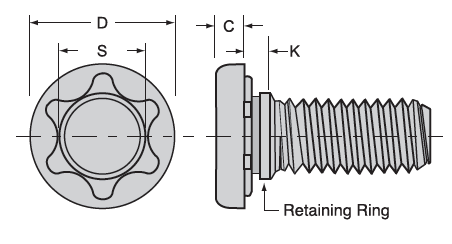
Powerful Clinching Studs
Benefits
Eliminates welding
Easy installation
Consistent reliable performance
High resistance to push-out and rotation

Features
Displacement lobes
Retaining groove
Retaining ring
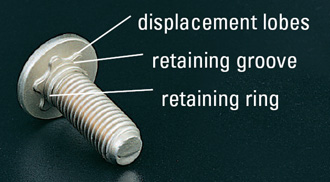
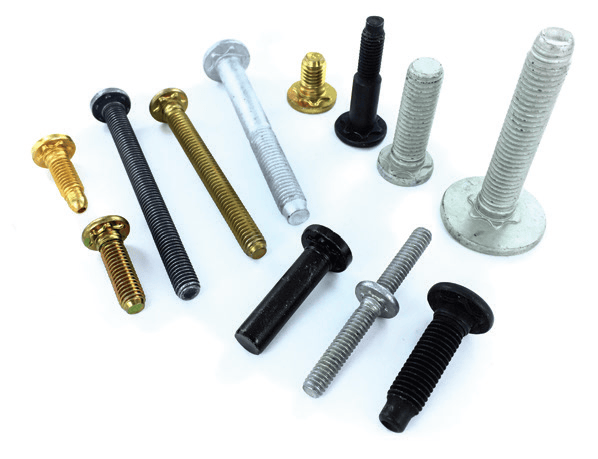
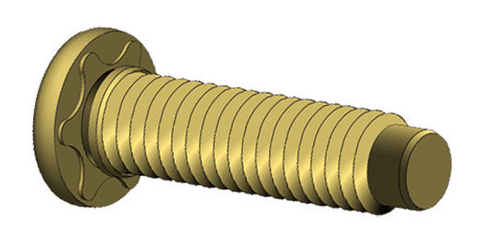
High Performance
Clinch Studs for Use
in Steel & Aluminum
Unique Design Provides
Exceptional Performance
Our high-performance STRUX® fasteners offer a stronger and more reliable assembly alternative to traditional clinch and weld studs.
In most cases, a STRUX fastening solution can yield significant time and cost savings compared to welded or other staked fasteners.

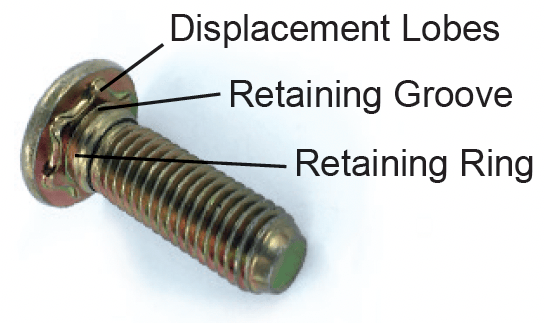
Benefits Exceeding Expectations
- Resists rotation and push-out
- Eliminates welding operations
- Can be used on non-weldable materials
- Can be installed using automated equipment
- Facilitates assembly of hard-to-reach components
Unique Design Provides Exceptional Performance

Eliminates Welding
STRUX® fasteners eliminate the need for expensive and sometimes hazardous welding operations.
- No distortion due to excessive heat
- The aesthetic value of the application is improved
- Potential for corrosion is reduced
- Elimination of costly production bottlenecks
Consistent Reliability
With proper installation, STRUX fasteners can reduce the potential for failure. STRUX products give you consistent push-out strength and torque values, whether it is the 10th or 10 millionth fastener that is being installed. Visual inspection of the joint is fast and clean.
- Consistent joint integrity
- Predictable performance
Resists Push-Out & Rotation
Once seated, the displacement lobes keep the STRUX fastener from rotating during service. The torsional and push-out strength are limited only by the shear strength of the engagement material.
Critical Applications
The high-performance capabilities of STRUX products make them an excellent match for critical applications such as airbags and seating.
- Complete design assistance
- Application testing
- Assembly validation
Installation
 The stud end is fed into a lower die through a punched or drilled hole. A punch then applies force to the stud, and the retaining ring passes through the hole. As pressure is applied, the displacement lobes are seated, forcing the engagement material into the retaining groove.
The stud end is fed into a lower die through a punched or drilled hole. A punch then applies force to the stud, and the retaining ring passes through the hole. As pressure is applied, the displacement lobes are seated, forcing the engagement material into the retaining groove.
STRUX clinch fasteners can be assembled manually or automatically with equipment capable of feeding rivets, weld studs, or conventional clinch studs. This includes hydraulic staking presses.
- Increased production rates when using progressive dies
- Improved product and joint integrity
 STRUX®
STRUX®
the product reduces costs and simplifies assembly
The innovative STRUX clinch stud design can be incorporated in many ways to overcome application challenges and reduce assembly costs. A major OEM faced a unique assembly configuration on one of their highest volume product lines. The application involved assembling a major component, providing only one-sided access. In this assembly, a stamping must be attached to a special M12 diameter bolt to prevent rotation during tightening.
 The original design concept considered the welding of this stamping to the bolt. Our engineering services team engaged with the customer early enough in the design process and proposed the STRUX design as part of an improved fastening solution. The result was a simpler, lighter design that utilized less raw material, avoided the process constraints of welding, and was more environmentally friendly.
The original design concept considered the welding of this stamping to the bolt. Our engineering services team engaged with the customer early enough in the design process and proposed the STRUX design as part of an improved fastening solution. The result was a simpler, lighter design that utilized less raw material, avoided the process constraints of welding, and was more environmentally friendly.
Design and Performance Data

Semblex controls underhead configuration to achieve the performance requirements.
The performance information provided will be used only as a guideline; actual application conditions may vary.
All performance data is based on tests performed in low-carbon steel (hardness 70 Rb Max.) under laboratory conditions. Performance data for materials other than steel should be individually tested.
It is recommended that when specific performance values are required, the actual application be tested.
Contact Semblex Application Engineering for additional design assistance.
